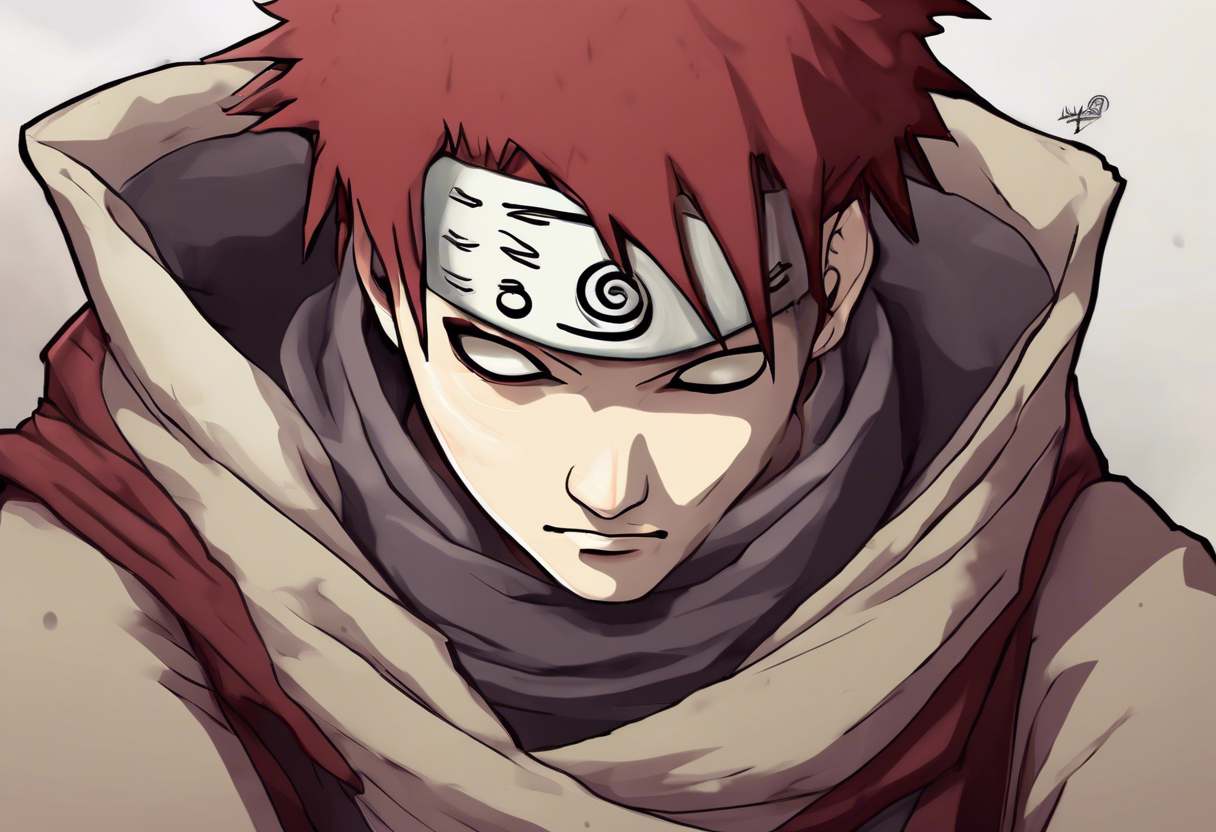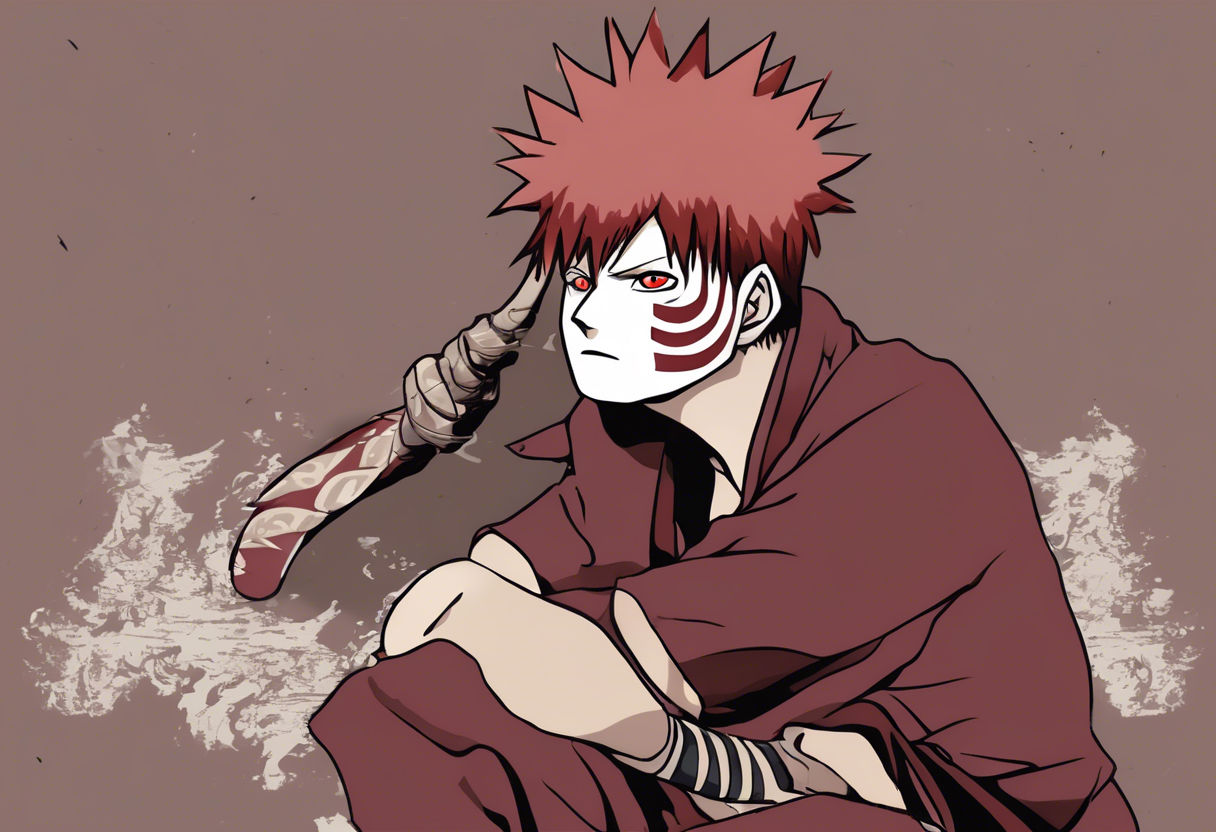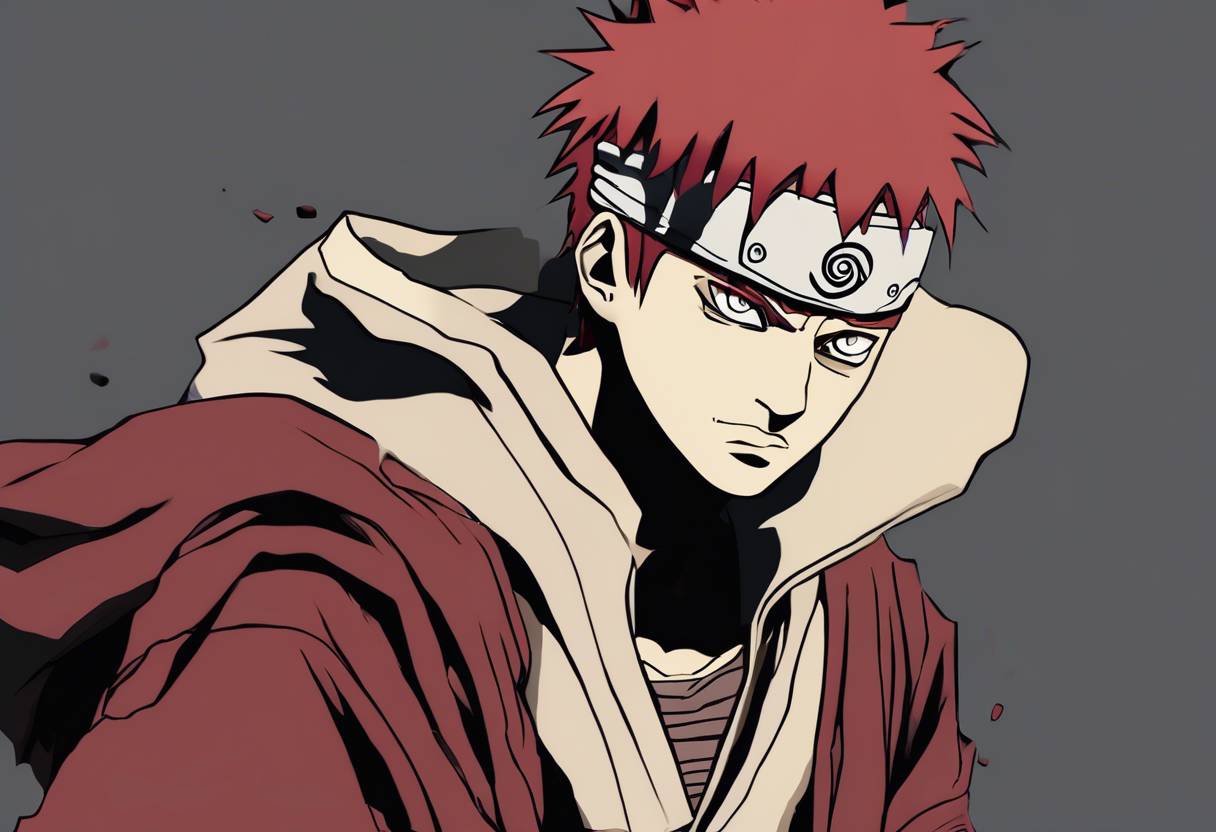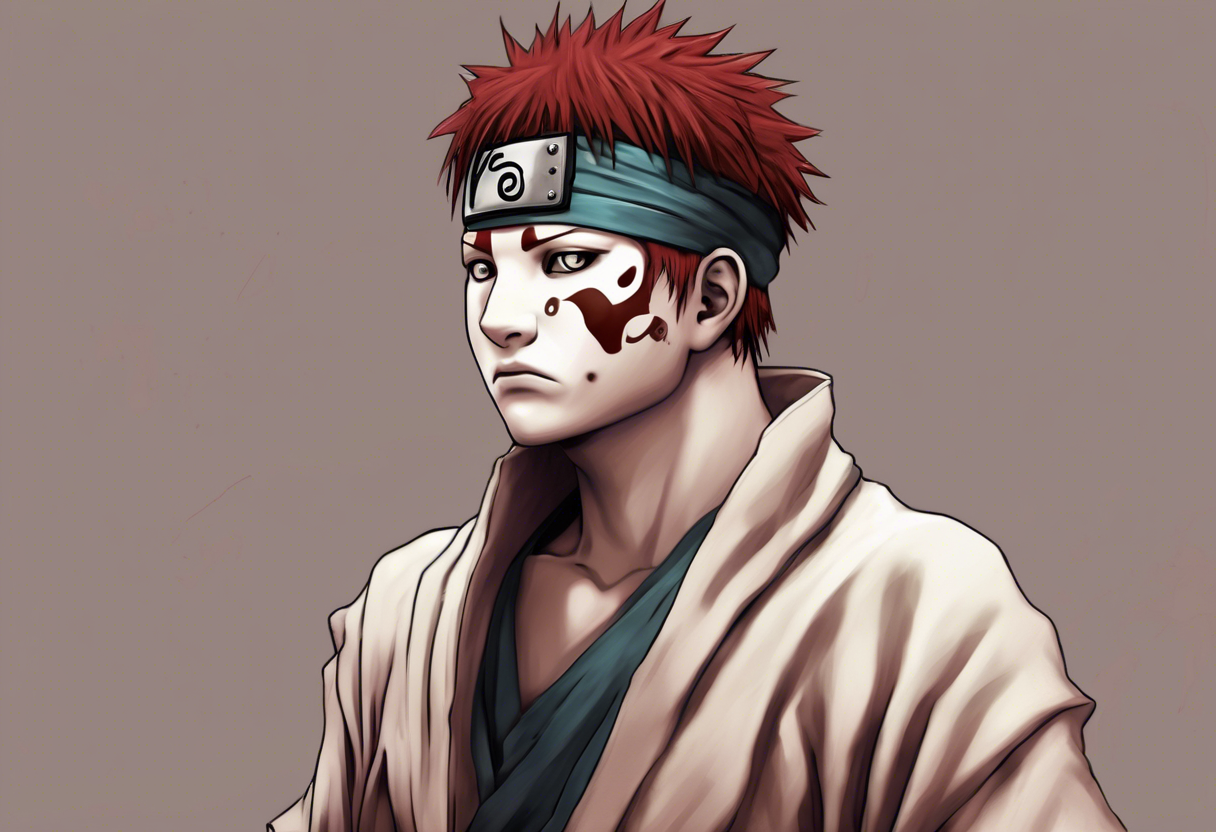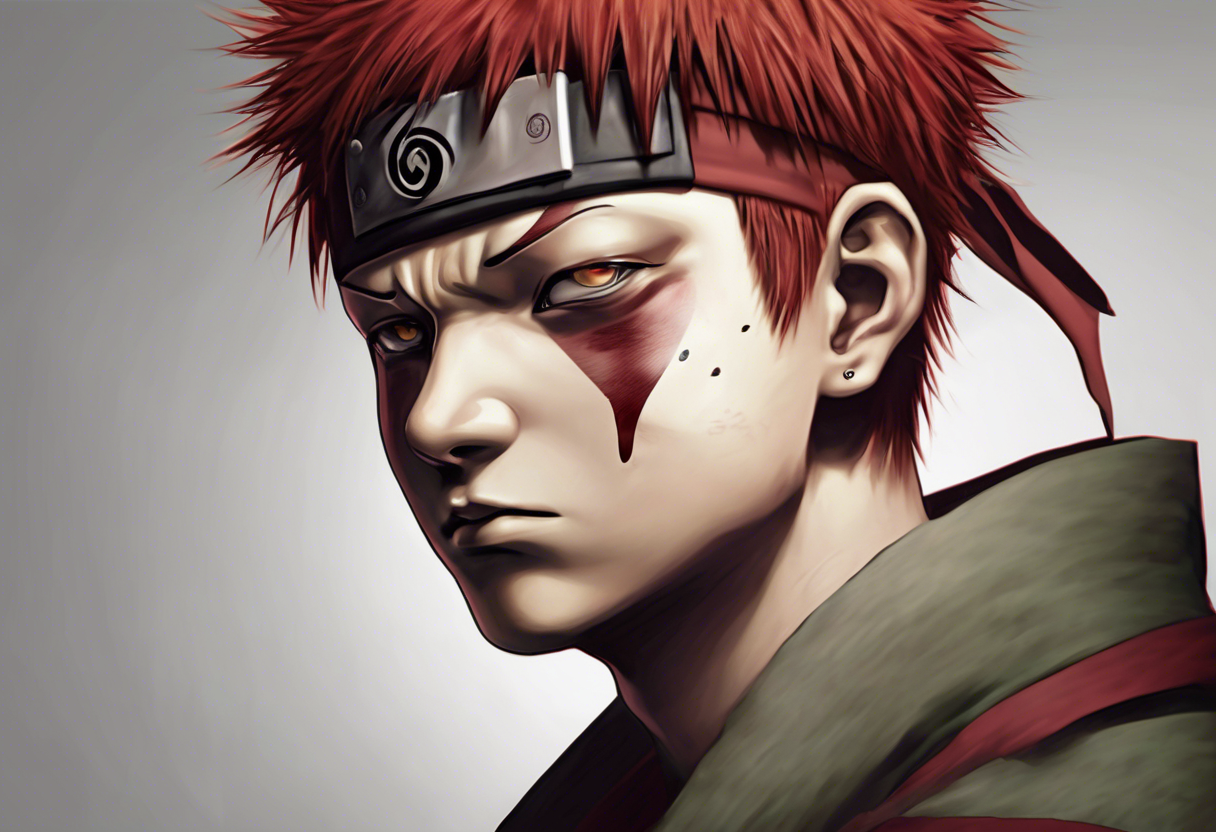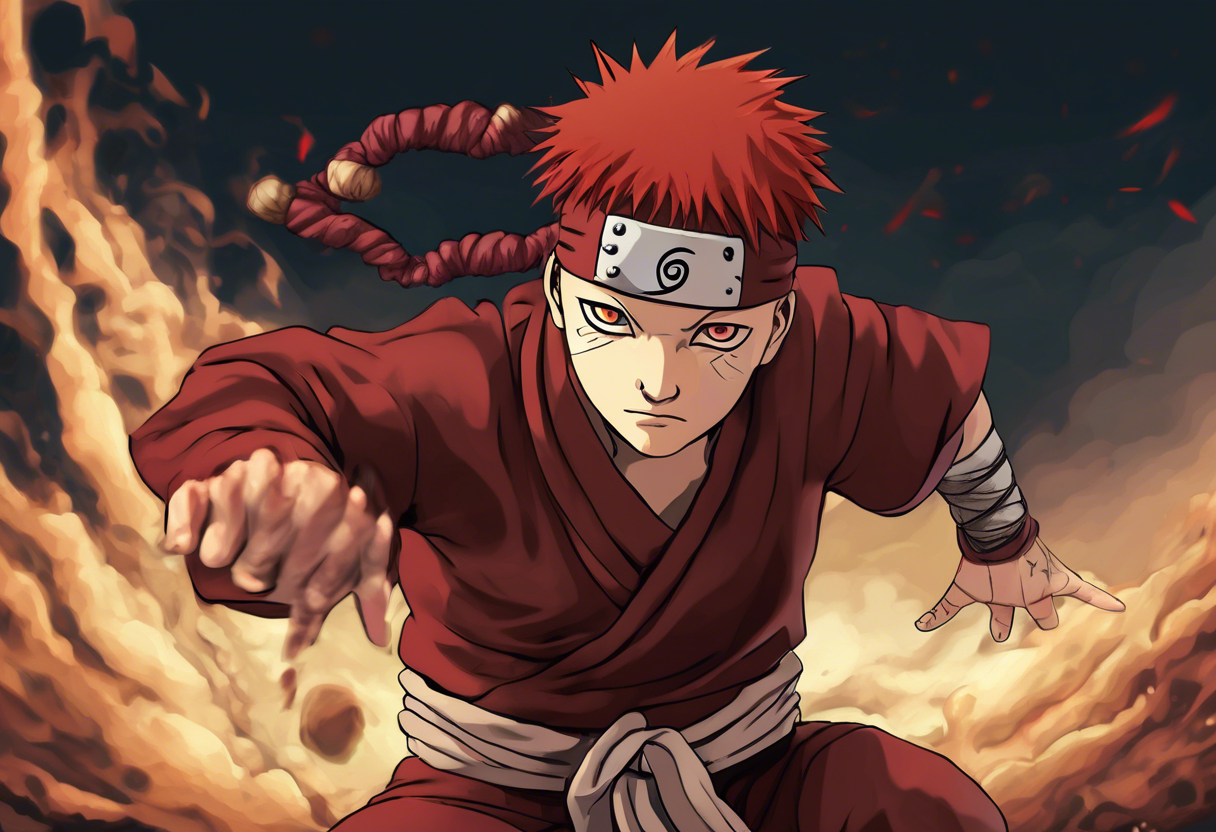Contents
Introduction
Gaara, also known as Gaara of the Desert, is a pivotal character in the popular manga and anime series Naruto, created by Masashi Kishimoto. Born as the host of the One-Tailed Beast, Shukaku, Gaara is the youngest son of the Fourth Kazekage, the leader of Sunagakure (Hidden Sand Village). His creation was influenced by Kishimoto’s desire to craft a character that would serve as a foil to the series’ protagonist, Naruto Uzumaki, highlighting the contrasting outcomes of similar traumatic upbringings.
Gaara’s backstory is marked by isolation and trauma. He was ostracized by his village due to his status as a Jinchuriki, a person hosting a powerful Tailed Beast. His father’s attempt to assassinate him, fearing Gaara’s inability to control Shukaku, further exacerbated his emotional scars. This tumultuous childhood shaped Gaara into a ruthless and withdrawn individual, driven by a singular focus on self-preservation and a belief that his purpose was to kill his enemies [1][2].
The character’s design and name underwent significant changes during the development process. Initially, Kishimoto considered names like Kotarou Fuuma and Kumomaru, but ultimately settled on Gaara, a name that includes the kanji for "love," reflecting the complex and conflicted nature of his character [1].
Role in the Story
Gaara’s storyline is deeply intertwined with the narrative of Naruto. Initially introduced as an antagonist, Gaara’s role evolves significantly as the series progresses. His first appearance is during the Chunin Exams, where he confronts Naruto and his friends, showcasing his formidable powers and cold demeanor.
However, through his interactions with Naruto, Gaara begins to undergo a profound transformation. Naruto’s unwavering kindness and determination help Gaara to see the value in human connections and the importance of protecting others. This shift is particularly evident after Gaara learns about his uncle’s attempt to kill him and the true nature of his mother’s feelings towards him. These revelations prompt Gaara to reevaluate his life and eventually become the Fifth Kazekage of Sunagakure, working tirelessly to protect and unite his village [1][3].
Gaara’s relationships with other characters are crucial to his development. His bond with Naruto is particularly significant, as it challenges his initial worldview and encourages him to seek redemption. Additionally, his interactions with his siblings, Temari and Kankuro, and other characters from Sunagakure, highlight his growth from an isolated individual to a compassionate leader.
Key events in Gaara’s storyline include his battles during the Chunin Exams, his confrontation with Akatsuki, and his eventual ascension to the position of Kazekage. These events not only test his physical strength but also his emotional resilience and capacity for leadership [1][5].
Character Analysis
Gaara’s personality is complex and multifaceted. Initially, he is portrayed as a cold, ruthless, and highly withdrawn individual, driven by a desire for self-preservation and a lack of empathy for others. This persona is a direct result of his traumatic childhood and the constant fear of being ostracized and attacked.
However, as the series progresses, Gaara’s character undergoes significant development. He begins to express emotions and form connections with others, particularly Naruto, who becomes a catalyst for his change. Gaara’s transformation is marked by his increasing ability to trust and care for others, which contrasts sharply with his earlier self-centeredness.
Gaara’s strengths include his immense physical power, strategic thinking, and unwavering dedication to his duties. As the Kazekage, he demonstrates strong leadership skills and a deep commitment to protecting his village. However, his past experiences also leave him with significant emotional scars, making it challenging for him to fully open up to others.
From a psychological perspective, Gaara can be classified under different personality types. Some analyses suggest he fits the profile of an ENTP (Extraverted, Intuitive, Thinking, Perceiving) type, characterized by his analytical and strategic thinking, as well as his initial detachment from emotional connections. Alternatively, he can also be seen as an ISTJ (Introverted, Sensing, Thinking, Judging) type, given his practical, reliable, and organized nature, especially in his role as Kazekage [3].
Themes and Symbolism
Gaara embodies several key themes in the Naruto series. One of the most significant is the theme of isolation versus connection. Gaara’s journey from a solitary, self-centered individual to a leader who values the bonds with others highlights the importance of human relationships and community.
The symbol etched into Gaara’s forehead, which means "love," is a poignant reminder of his complex relationship with this concept. Initially, it serves as a reminder of his rejection and the lack of love he felt from his village. However, as he grows, it symbolizes his newfound understanding and appreciation of love and connection [5].
Gaara’s character also delves into the theme of redemption and personal growth. His transformation from an antagonist to a hero underscores the possibility of change and the impact that positive relationships can have on an individual’s life.
Cultural Impact
Gaara has had a significant cultural impact, both within the Naruto fanbase and beyond. He is widely regarded as one of the most compelling and complex characters in the series, with a backstory that evokes strong emotional responses from viewers.
In terms of fan reception, Gaara has consistently ranked high in popularity polls and has been the subject of extensive fan art, cosplay, and fan fiction. His character has also been featured in various merchandise, including plush dolls, key chains, and action figures [1].
The influence of Arabic and Egyptian culture on Gaara’s character and the Hidden Sand Village is also noteworthy. Kishimoto’s use of these cultural elements adds a rich layer of depth to the series, reflecting the diversity and complexity of the Naruto universe [4].
Critical Reception
Gaara has received widespread critical acclaim for his complex character development and the emotional depth he brings to the series. His initial introduction as a ruthless antagonist and his subsequent transformation into a compassionate leader have been praised by critics and audiences alike.
The fight between Naruto and Gaara during the Chunin Exams is often cited as one of the high points of the series, due to the emotional resonance and the contrast between their similar yet divergent paths [1].
However, Gaara’s character has also been subject to various interpretations and criticisms. Some viewers have noted the complexity of his emotional journey and the challenges he faces in connecting with others, while others have praised his growth and leadership.
Legacy
Gaara’s legacy in the Naruto series is profound and enduring. His character arc serves as a powerful reminder of the human capacity for change and growth. His transformation from an isolated, self-centered individual to a compassionate leader has inspired many fans and has become a hallmark of the series.
Gaara’s influence can also be seen in other works of fiction, where characters with similar backstories and developmental arcs are often compared to him. His impact on popular culture extends beyond the anime, reflecting broader themes of redemption, connection, and personal growth.
In conclusion, Gaara is a character whose significance extends far beyond his role in the Naruto series. His complex personality, compelling backstory, and transformative journey make him a beloved and memorable character, ensuring his legacy as one of the most iconic figures in anime history.
References
- https://en.wikipedia.org/wiki/Gaara
- https://www.fanverse.org/threads/saddest-backstory-in-naruto-opinions-only.1325996/
- https://boo.world/database/profile/20452/gaara-personality-type
- https://www.fanverse.org/threads/is-gaara-arabian-influenced.195163/
- https://www.thegamer.com/naruto-gaara-trivia-fun-facts-married-wife-cacti-symbol-forehead/

